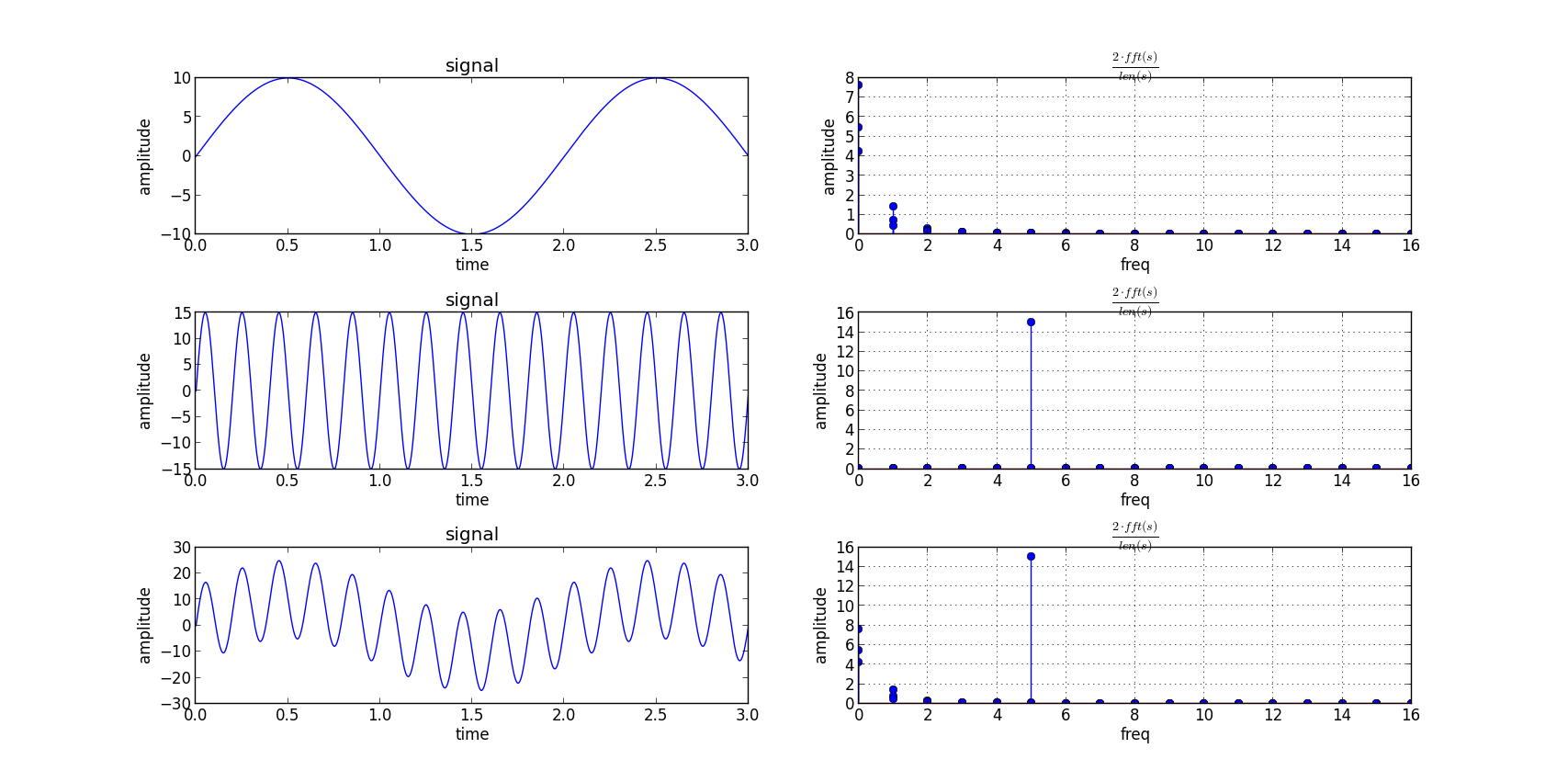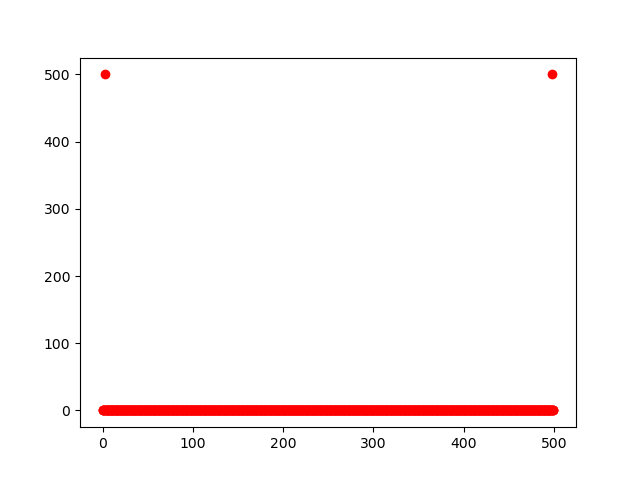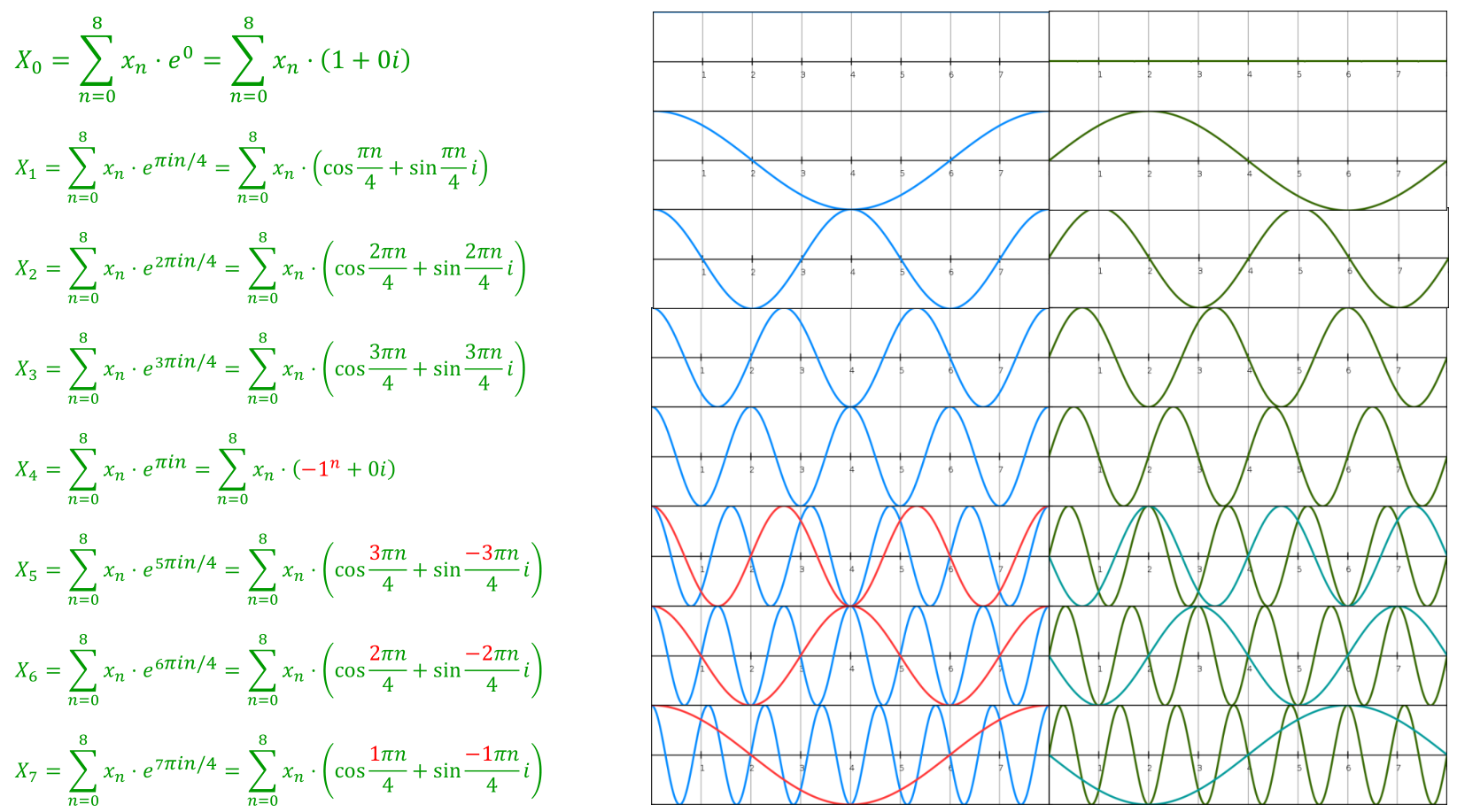I'm currently trying to figure out how exactly to use Eigen's FFT algorithm. Let us a assume I have a function
std::complex<double> f(std::complex<double> const & t){
return std::sin(t);
}
I then compute with this function
Eigen::VectorXcd time(1000);
Eigen::VectorXcd f_values(1000);
for(int u = 0; u < 1000; ++u){
time(u) = u* 2. * M_PI / 1000;
f_values(u) = f(time(u));
}
I'd now like to compute the Fourier transformation of f_values, so I do
Eigen::FFT<double> fft;
Eigen::VectorXcd f_freq(1000);
fft.fwd(f_freq, f_values);
Now I would like to plot this, but to do this I need the frequencies at which f_freq was evaluated, but I don't really know how to obtain these frequencies. So my question boils down to finding the Eigen::VectorXcd containing the frequencies to plot things like this
 (I'm sorry for using a picture as description, but I think its much clearer this way then if I tried to describe it with words... The
(I'm sorry for using a picture as description, but I think its much clearer this way then if I tried to describe it with words... The amplitude from the plot should correspond to my f_freq and what I looking for is the values of freq in the picture...).
Here are the above code snippets put into a single file:
#include <eigen3/Eigen/Dense>
#include <eigen3/unsupported/Eigen/FFT>
#include <complex>
#include <cmath>
std::complex<double> f(std::complex<double> const & t){
return std::sin(t);
}
int main(){
Eigen::VectorXcd time(1000);
Eigen::VectorXcd f_values(1000);
for(int u = 0; u < 1000; ++u){
time(u) = u* 2. * M_PI / 1000;
f_values(u) = f(time(u));
}
Eigen::FFT<double> fft;
Eigen::VectorXcd f_freq(1000);
fft.fwd(f_freq, f_values);
//freq = ....
}
I implemented one of the suggested answers as follows:
#include <eigen3/Eigen/Dense>
#include <eigen3/unsupported/Eigen/FFT>
#include <complex>
#include <cmath>
#include <iostream>
#include <fstream>
std::complex<double> f(std::complex<double> const & t){
return std::sin(1.*t);
}
int main(){
std::ofstream freq_out("frequencies.txt");
std::ofstream f_freq_out("f_freq.txt");
unsigned const N = 1000.;
Eigen::VectorXcd time(N);
Eigen::VectorXcd f_values(N);
for(int u = 0; u < N; ++u){
time(u) = u* 2. * M_PI / double(N);
f_values(u) = f(time(u));
}
Eigen::FFT<double> fft;
Eigen::VectorXcd f_freq(N);
Eigen::VectorXd freq(N);
fft.fwd(f_freq, f_values);
double const Ts = 2. * M_PI/double(N);
double const Fs = 1./Ts;
for(int u = 0; u < N; ++u){
freq(u) = Fs * u / double(N);
}
freq_out << freq;
f_freq_out << f_freq.cwiseAbs();
}
which results in the following plot
 This seems a bit off.. The scaling certainly makes not much sense, but also the fact that there are two values that spike makes me a bit skeptical..
This seems a bit off.. The scaling certainly makes not much sense, but also the fact that there are two values that spike makes me a bit skeptical..



k * SampleRate/NwhereNis the number of points and-N/2 <=k < N/2. One has to check whetherNis even/odd. Also depending on implementation the frequencies can be stored -fmax to fmax or 0 to fmax then -fmax to 0, wich means data needs to be reorganized before plotting. I am aware that this is a C++ question, but you might have a look at the documentation of pythons numpy.fft and the implementation of numpy.fft.fftfreq – KylaSampleRateexactly would be.. Can you maybe explain that? – SiegelTs. Maybe try anotherTsto get the spikes more towards the center...Ts = 10/(2*pi)seems reasonable to me. As you have it now, the spike should be in the first bin: it seems ok to me. – KeratoidEigenreturns a double-spectrum (symmetrical if the signal was real). – Keratoid